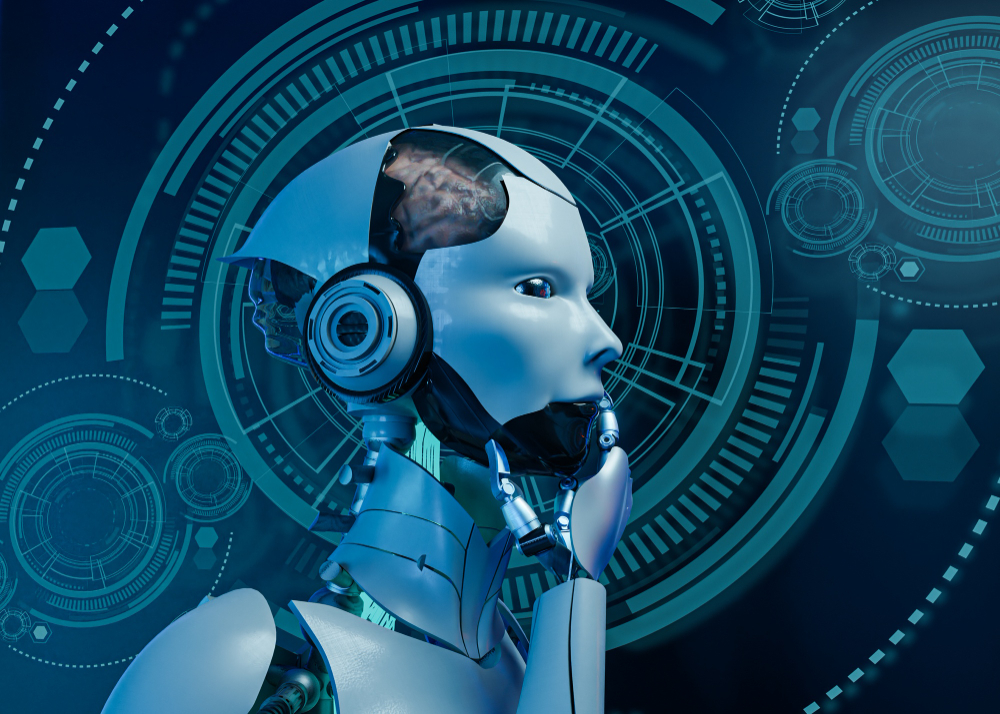Intelligent by Default: Embedding AI into the Core of Business Growth

Strong 8k brings an ultra-HD IPTV experience to your living room and your pocket.
Artificial intelligence (AI) is no longer the future—it’s the foundation. What once seemed like a high-tech luxury is now a business necessity. Organizations that once dabbled in AI for isolated use cases are realizing that true transformation only comes when AI is embedded into the core of their operations.
In this article, we’ll explore what it means to be “intelligent by default”—a mindset and strategy where AI isn’t an add-on, but an integrated layer in how the business thinks, moves, and grows. We’ll look at how forward-thinking companies are designing their operations around AI, and why this shift is critical to staying competitive in a fast-moving digital economy.
Why “Intelligent by Default” Matters Now
For years, AI has been treated like an experiment. Companies spun up isolated projects, hired data scientists, and celebrated pilot wins. But many of these efforts hit a wall when it came to real-world impact.
The reason? AI was seen as a tool—not a transformation.
To unlock its true potential, AI must be:
Integrated into core systems and workflows
Driven by clear business objectives
Continuously learning and improving
Trusted by teams across the enterprise
This is the difference between using AI and being AI-enabled.
The Shift from Automation to Intelligence
Most businesses start their digital journey by automating repetitive tasks—streamlining operations and cutting costs. But the next frontier is intelligent decision-making at scale.
Here’s the difference:
Automation Intelligence
Follows rules Learns from data
Task-level optimization Process and strategy-level optimization
Static workflows Dynamic, adaptive systems
Efficiency-focused Growth and innovation-focused
“Intelligent by default” means designing systems that can analyze, adapt, and improve continuously—without human intervention at every step.
The Building Blocks of Embedded Intelligence
Let’s explore how organizations can lay the groundwork to make intelligence a default part of their business model.
1. Strategic Alignment: AI with a Purpose
Every intelligent system should start with a business question:
What decision are we trying to improve?
What process needs to be faster, cheaper, or smarter?
How will this help us serve our customers better?
AI should be woven into business strategy, not tacked on to existing workflows. That means involving business leaders in defining priorities, success metrics, and user needs from the outset.
Tip: Create a strategic AI roadmap that maps use cases to measurable outcomes like revenue growth, retention, or risk reduction.
2. Robust Data Foundations
No intelligence without information. Embedding AI means ensuring data is:
Clean, accessible, and well-labeled
Flowing in real-time across systems
Governed with clear policies for privacy and compliance
Companies that succeed with AI treat data as infrastructure—not just a byproduct. They invest in data engineering, warehouses, and tools that support continuous learning.
Case in Point: Netflix uses real-time user interaction data to constantly refine its recommendation engines—powering both engagement and growth.
3. Infrastructure Built for Scale
Embedding AI isn’t about one model—it’s about building a platform. This requires:
Scalable cloud-based compute environments
APIs that allow teams to plug AI into any product or service
ModelOps pipelines for deploying, monitoring, and retraining models
With these in place, AI becomes a service available across the company—not a bottleneck hidden in a single department.
Tip: Use modular architectures (microservices) so that AI capabilities can be reused and extended over time.
4. Cross-Functional Collaboration
Intelligent businesses don’t silo AI in IT or data science. They build cross-functional teams that bring together:
Domain experts (who understand the business)
Data scientists (who build the models)
Engineers (who deploy and scale them)
Designers and PMs (who shape user experience)
This fusion ensures that AI is both technically sound and commercially relevant.
Tip: Position AI teams within product and business units, not as standalone innovation labs disconnected from operations.
5. Human-in-the-Loop Intelligence
“Intelligent by default” doesn’t mean humans are removed from the process. It means humans and machines work together more effectively.
This includes:
Providing transparency into AI decisions
Allowing for human review or override
Using human feedback to improve models over time
For example, in a financial institution, a risk model might flag a transaction for fraud—but a human agent makes the final call, and that feedback loops back into the system.
Trust is essential—and trust comes from visibility, control, and collaboration.
6. Governance, Ethics, and Responsibility
As AI becomes pervasive, companies must build guardrails to ensure it's used responsibly.
This includes:
Auditing models for bias and fairness
Ensuring explainability in regulated environments
Setting clear policies for data use, security, and compliance
Companies like Microsoft and Salesforce have published ethical AI guidelines—not just to protect users, but to future-proof their innovation.
Tip: Establish an AI ethics board and incorporate ethical reviews into your model development lifecycle.
7. Continuous Learning and Improvement
AI systems don’t stand still. Markets shift, user behavior changes, and data evolves. To stay intelligent, systems must:
Monitor model performance in real time
Detect data drift and retrain automatically
Learn from new feedback and adapt
This makes AI not just smarter—but resilient in the face of change.
Case in Point: E-commerce platforms update pricing and inventory recommendations daily based on new data to stay competitive.
Real-World Example: AI Embedded in Amazon’s DNA
Amazon doesn’t treat AI as a feature. It’s part of their business operating system.
AI powers:
Product recommendations (personalization)
Warehouse logistics (robotics and prediction)
Dynamic pricing (based on market trends)
Alexa (voice AI interface)
Fraud detection and customer support
The key is that AI is not experimental—it’s expected. It's how Amazon moves fast, stays efficient, and keeps customers at the center.
How to Begin Your Transition
Becoming “intelligent by default” is a journey. Here’s how to get started:
1. Audit Your AI Readiness
What use cases have you tried?
What’s working? What’s stuck?
Where are your data and system bottlenecks?
2. Build a Cross-Functional AI Strategy Team
Include business, tech, and data leaders
Define short- and long-term goals
3. Start Embedding AI into Key Workflows
Begin with high-impact areas like customer service, operations, or forecasting
Focus on real outcomes, not just experimentation
4. Invest in Platforms, Not Just Projects
Build reusable AI infrastructure
Train teams to collaborate across disciplines
5. Make Learning Part of the Culture
Create feedback loops for continuous improvement
Encourage experimentation with accountability
Final Thoughts
Artificial intelligence is not a one-time innovation. It’s a foundational shift in how businesses operate and grow. When done right, AI doesn’t just automate tasks—it enables entirely new capabilities.
To lead in the AI era, companies must stop asking “Where can we apply AI?” and start asking “How do we build a business that is intelligent by default?”
Because in the future, the most successful companies won’t just use AI.
They’ll be built on it.
Note: IndiBlogHub features both user-submitted and editorial content. We do not verify third-party contributions. Read our Disclaimer and Privacy Policyfor details.







